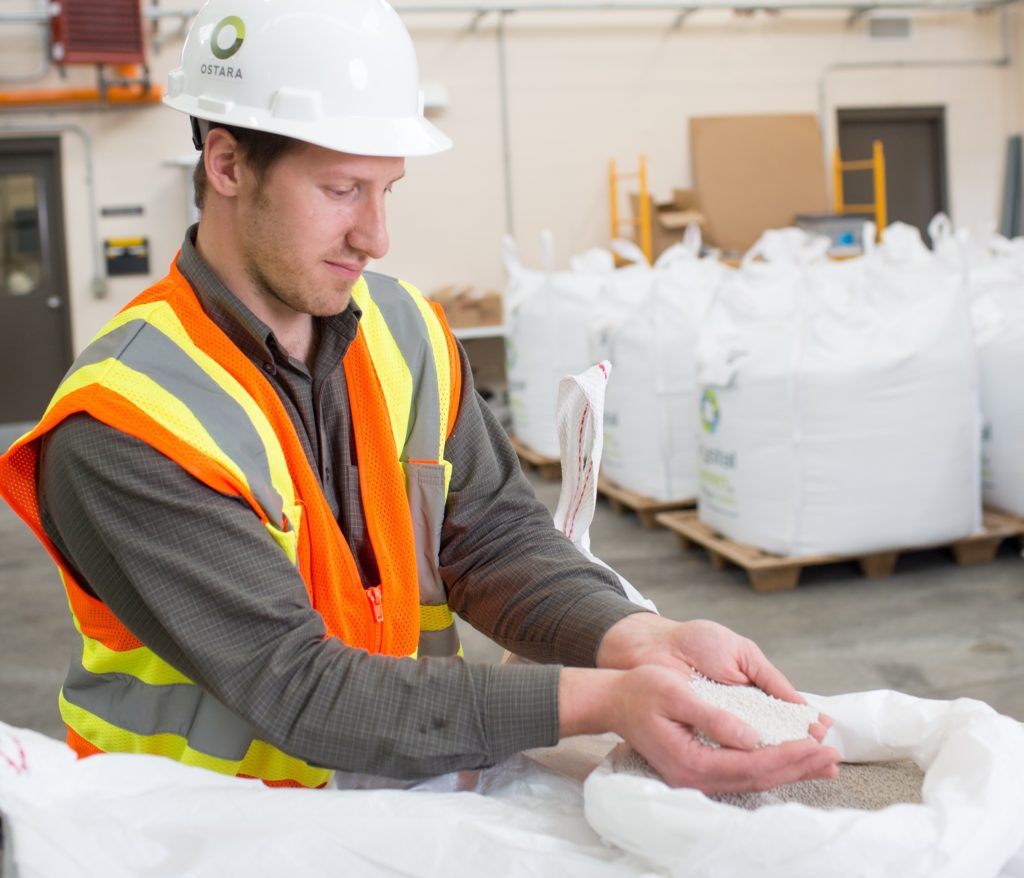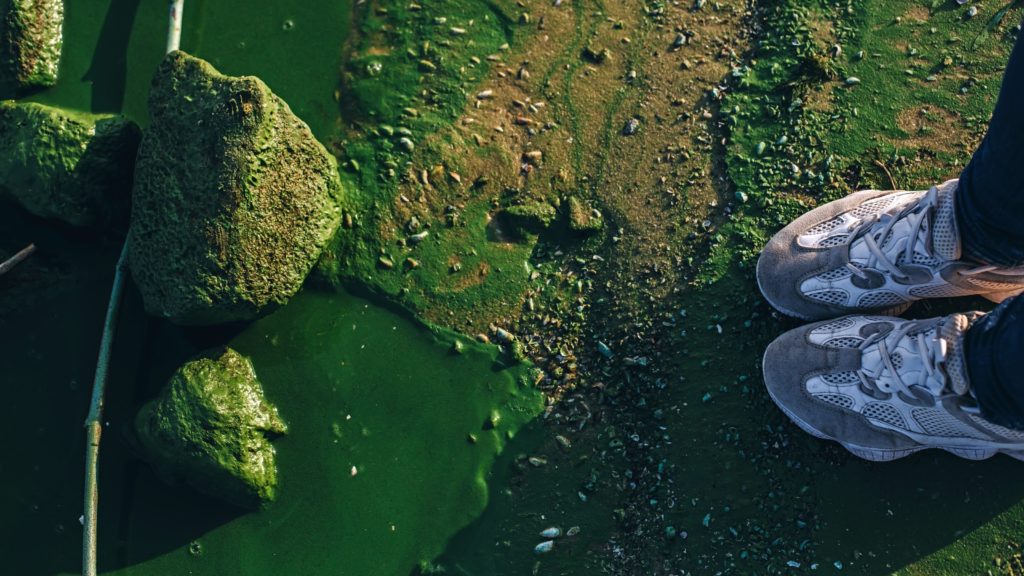Reducing phosphorus in our watershed
Phosphorus is essential for plant life, but too much of it in our water can promote excessive algae growth and starve fish and aquatic plants of oxygen. The District has taken a pioneering, multipronged approach to reduce phosphorus (P) in local waterways. Operational improvements have resulted in a high degree of phosphorus removal from wastewater, while innovative partnerships and outreach have helped advance nutrient runoff management and phosphorus reduction in the surrounding watershed.
As an early adopter of struvite harvesting and watershed-based phosphorus compliance, industry peers and stakeholders turn to the District to learn from our experience. We offer facility tours and presentations about nutrient removal to share technical knowledge.
Innovation in treatment technology
For many years, operational improvements have kept the District at the front of the curve on phosphorus reduction.
In 1999, we modified our biological treatment processes to remove most phosphorus from wastewater, and the process currently achieves a 95% phosphorus reduction through treatment. The change resulted in more phosphorus going to the solids digestion process and increased the formation of struvite, a type of phosphate mineral that can restrict liquid flow where it forms on plant infrastructure.

By 2014, we took nutrient removal to the next level by installing cutting-edge technology to harvest and address struvite from wastewater. We partnered with Ostara Nutrient Recovery Technologies to construct a struvite harvesting facility and recover a valuable fertilizer product for beneficial reuse as a green, slow-release rock phosphate alternative.
In this facility, struvite is intentionally created in a controlled process, resulting in small beads of struvite that are dried and packaged for export from the plant. By controlling the precipitation of struvite, there’s less chance it will form naturally as nuisance struvite scale formation in sludge-handling processes, equipment and pipes. Struvite harvesting also reduces phosphorus in our biosolids, helping us better manage where phosphorus is applied on the landscape within our community.
As one of the first wastewater treatment plants in the country to install this technology, we have diverted over one million pounds of phosphorus from biosolids for beneficial reuse. The Ostara recovery process ships an average of 143,313 pounds of struvite away from the local watershed each year.
Nonpoint phosphorus reduction
The District works extensively in the greater Madison area to reduce nutrient pollution from runoff to make a lasting impact on local water quality. We were one of the first wastewater treatment plants to pursue watershed adaptive management as a strategy for phosphorus compliance under Wisconsin’s Phosphorus Rule.
The District is the founding member of the Yahara Watershed Improvement Network (Yahara WINS), a group of partners working to reduce phosphorus pollution through runoff management. After a four-year pilot period, the Yahara WINS partnership began in 2017 as a 20-year initiative to achieve long-term phosphorus reduction goals in the watershed. It is exceeding annual goals for phosphorus mass reductions to receiving streams.
In 2022, the Madison Metropolitan Sewerage District was recognized as a Platinum Partner by NutrientSmart, a collaboration between the Water Environment Federation and the U.S. Environmental Protection Agency, for the District’s work with Yahara WINS and historical successes in phosphorus reductions.
What you can do

You can help reduce phosphorus pollution in your community and reduce algae growth in your watershed. Three easy approaches to reducing phosphorus pollution at home include:
- Keep leaves, grass clippings and other organic matter off streets.
- Use no-phosphorus fertilizer on lawns and gardens.
- Direct downspouts to lawns and plant beds.
For additional phosphorus reduction strategies, read our blog article “Simple ways to reduce phosphorus pollution.”







